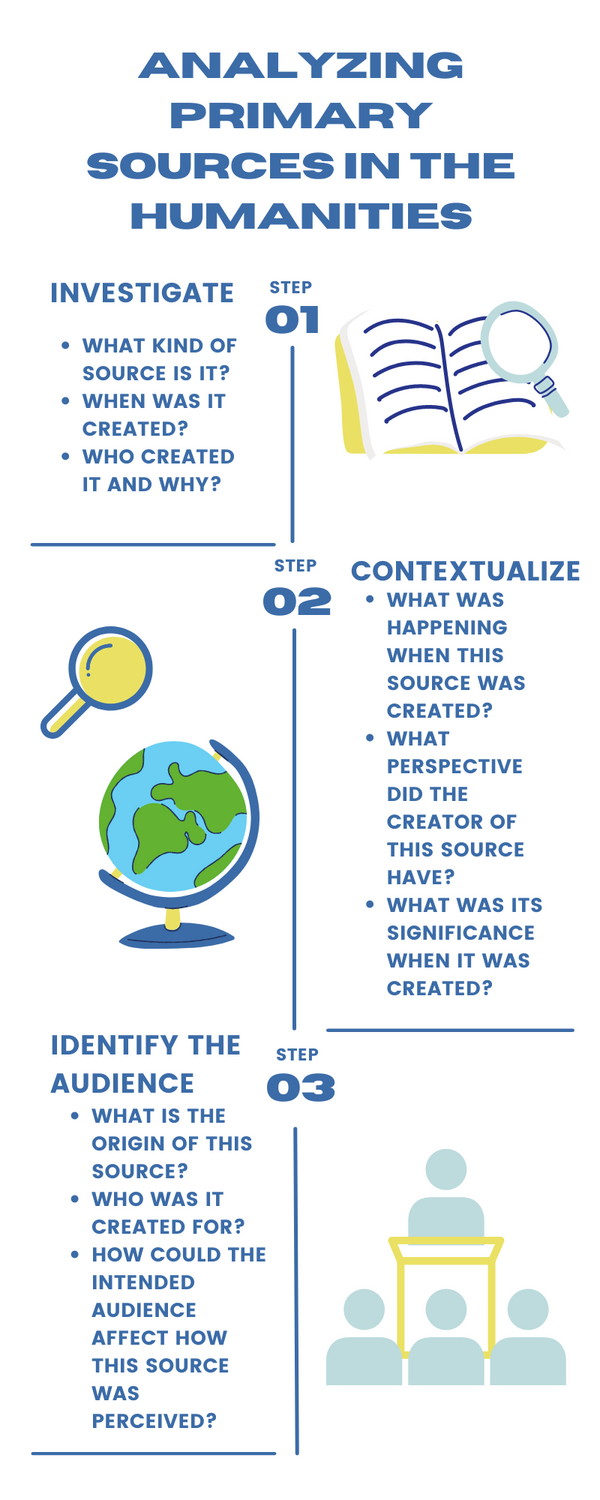Introduction to Analyzing Primary Sources
You are currently in the module on "Analyzing Primary Sources in the Humanities" in a larger tutorial. Each research tutorial includes modules of topics related to the overall tutorial learning objectives. Please go through all the pages in this module by clicking on the “Next” button on the bottom of the page in order to progress. If you would like to track your progress, be sure to log in with your UNCG credentials at the top right of the module. Each module includes Quick Checks on every page. These Quick Checks do not produce a certificate; they are optional and do not track your progress. Certificates are created by completing a whole tutorial, so be sure to complete all the modules within a tutorial in order to generate a certificate. You can also take a screenshot of your progress page.
UNCG Libraries Research Tutorials Help
Time needed to complete this module: 15 minutes
Learning Objectives:
- Understand the steps to analyzing primary sources
- Know what questions to ask about primary sources
- Understand how to interpret primary sources

Machine Readable PDF of "Analzying Primary Sources Infographic"
After you find primary sources related to your topic, the next step is to analyze them more closely. As a researcher, it is important to consider the sources carefully, including who created them, for whom were they created, and for what purpose.
Analyzing primary sources demonstrates that you understand the topic you are researching and helps you to answer your research questions. Often, analyzing primary sources will also help generate new or different research questions based on your findings.
When analyzing primary sources, you can also compare your interpretation of the research topic with scholars' interpretations, and perhaps even challenge their argument. There are many ways to analyze a primary source, but one method is to follow these three steps:
- Investigate
- Contextualize
- Identify the audience
These steps will help you to better analyze and understand the sources, and prepare to use them to support arguments in your writing.
Quick Check: